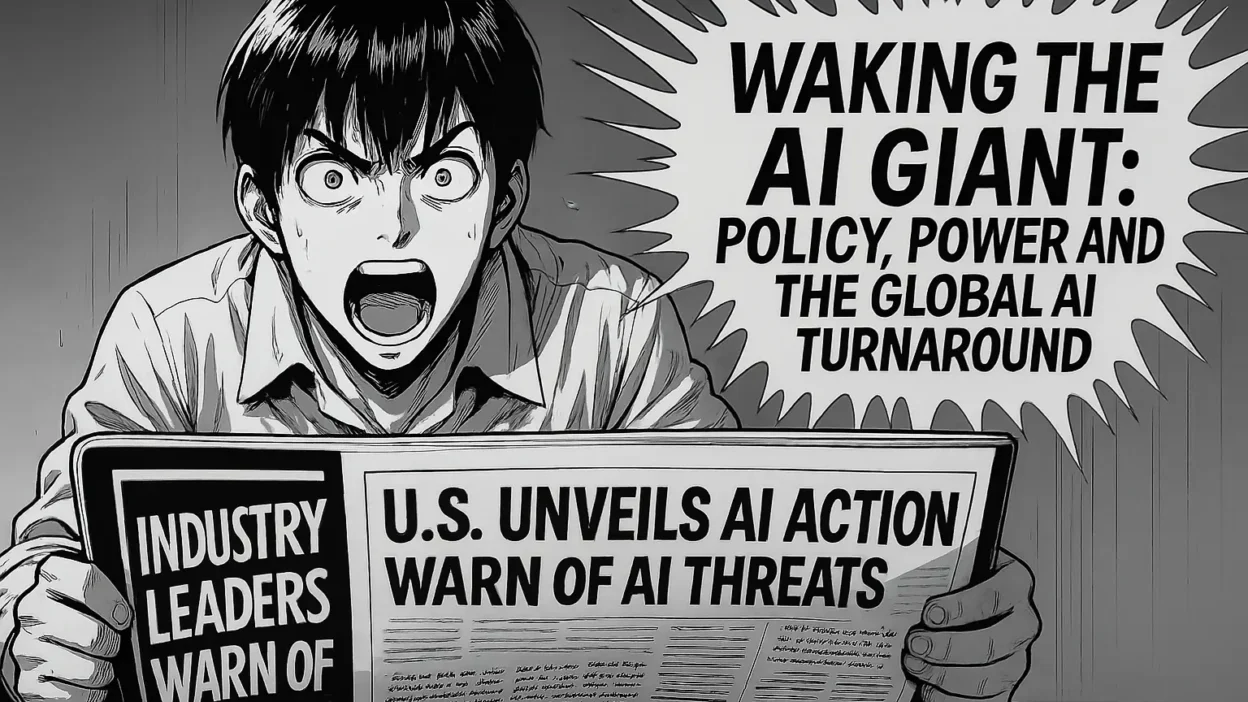Last Updated on July 27, 2025
AI policy and governance took center stage this week, as global leaders, companies, and creators faced sweeping changes in regulation, ethics, and strategy. The week of July 21–27, 2025 brought bold moves like the U.S. “AI Action Plan,” warnings from OpenAI’s CEO, and growing international tensions over AI governance. These are the key stories shaping the future of AI on a global scale.
U.S. Moves Fast with Bold AI Strategy
President Trump’s “America’s AI Action Plan”, unveiled on July 23, codified through three executive orders, pushes deregulation (especially of DEI mandates), rapid data center expansion, and targeted AI export programs.
Sources:
The plan positions AI as a priority in federal strategy, emphasizing truthfulness, ideological neutrality, and swift infrastructure scaling.
Implications:
- Policymakers align that ideological content, including DEI, will be stripped from federally used LLMs.
- Data center and chip manufacturing could be fast-tracked, reshaping offshoring patterns.
- AI export push reinforces the U.S.’s geopolitical positioning against China.
Industry Leaders Sound Alarms—and Embrace AI Tools
At a Federal Reserve event, Sam Altman warned that automation may eliminate entire job sectors and that AI already outperforms humans in diagnostics. He also raised concerns over voice cloning and cybersecurity.
Source:
Meanwhile, AMD CEO Lisa Su revealed they now use AI to accelerate GPU design—not to replace engineers, but to speed up innovation cycles.
Source:
Takeaway: AI tools are being positioned both as essential for innovation and as drivers of structural change in the workforce.
Global Governance vs. Global Fragmentation
China proposed a new international AI cooperation body, warning that fragmented AI regulations could widen the global tech gap. At the same time, the Geneva AI for Good Summit (July 8–11) was mired in controversy after speakers were asked to remove politically sensitive content from their presentations.
Source:
Looking forward: As global powers diverge in their AI strategies, the pressure to form interoperable standards is mounting—but consensus remains elusive.
India Tests AI Governance at State Scale
The government of Goa, India launched AI Mission 2027, a bold plan to integrate AI into healthcare, public services, and administration. This makes Goa one of the first sub-national governments in the world to formally adopt a localized AI governance strategy.
Source:
Why it matters: As federal governments debate AI policy, states and cities may emerge as faster, nimbler innovators.
Business Pressures Show an AI Bubble Brewing
This week, investor focus turned to Big Tech earnings. Companies like Microsoft, Meta, and Amazon face increased scrutiny over whether massive AI investments (over $300B globally) are translating into measurable impact.
Source:
Investor sentiment: The appetite for AI remains, but the market is shifting toward demanding real-world ROI, not hype.
AI Infrastructure Enters Industrial Hyperdrive
According to a new study, AI supercomputing capability is now doubling every 9 months, with xAI’s “Colossus” system consuming 300MW and costing over $7B. The scale and energy demands of such systems raise long-term questions about centralization and sustainability.
Source:
Future implications: Infrastructure will become a strategic asset in the AI race, influencing not just performance but geopolitics and environmental policy.
Strategic View: What This Means for Creators and Professionals
Government & Policy
Stakeholders must monitor evolving federal AI rules closely—especially those shaping procurement, content restrictions, and global partnerships.
AI Adoption & Ethics
As AI-powered creativity and governance expand, compliance frameworks and transparent data practices become non-negotiable—and regulations may follow.
Business & Innovation
Companies should evaluate how AI tools like GPU co-design or AI diagnostics can streamline workflows, cut costs, and reduce time to market.
Global Landscape
Be ready for bifurcated governance models. The U.S., EU, China, and emerging nations are all moving in different regulatory directions.
